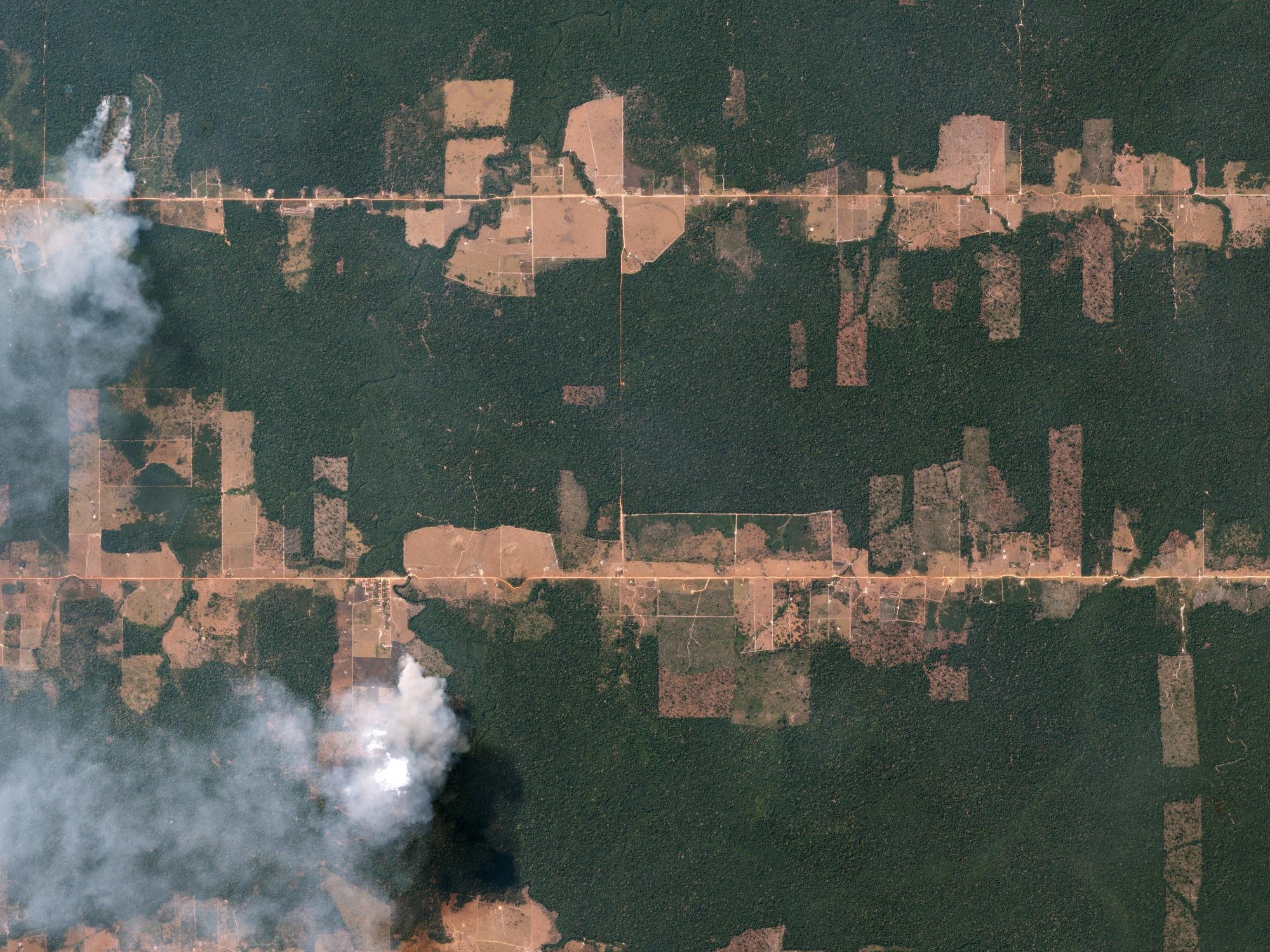Reviewed by Alex SmithMay 3 2022
According to new data, the world’s tropical regions lost 11.1 million hectares of forest cover in 2021, casting doubt on global goals to emd deforestation by 2030.
 Lands cleared in the Amazon rainforest in preparation for farming and grazing. The Amazon is one of the areas in the world with the greatest tree loss, according to new data. Image Credit: © Planet Labs, Inc., (CC BY-SA 4.0).
Lands cleared in the Amazon rainforest in preparation for farming and grazing. The Amazon is one of the areas in the world with the greatest tree loss, according to new data. Image Credit: © Planet Labs, Inc., (CC BY-SA 4.0).
According to the World Resource Institute’s Global Forest Watch, the tree loss comprised 3.75 million hectares of “critically important” primary rainforests in the Amazon and Congo Basin.
As per the forests monitor, this led to 2.5 gigatons of carbon dioxide being leaked into the atmosphere, which is equal to India’s yearly fossil fuel emissions.
The team specifically focused on the loss in humid tropical primary forests, which are areas of pristine rainforest that are important for carbon storage and biodiversity.
Mikaela Weisse, Deputy Director, Global Forest Watch
“We also focused on tropical forests because that is where modern-day deforestation—more than 96%—takes place,” Weisse said.
The rate of primary forest loss in the tropics has been “stubbornly continuous” in recent years, according to the report. The loss in 2021 was 11% lower than in 2020, but it came after a 12% spike in 2019, largely due to fires, according to the report.
Leaders from 141 nations signed a statement on forests and land use at the UN climate summit, COP26, in Glasgow in November, committing to “halt and reverse forest loss by 2030.”
According to the analysis, which is based on statistics from the University of Maryland in the United States, attaining these targets will need “a consistent decline in forest loss every year for the rest of the decade.” This is now only occurring in a few nations in the tropics, such as Indonesia and Malaysia, where primary forest cover loss has decreased in recent times.
This new data underscore just how much effort is needed to achieve the deforestation goals.
Mikaela Weisse, Deputy Director, Global Forest Watch
In 2021, Brazil was responsible for more than 40% of the world’s tropical primary forest destruction, totaling 1.5 million hectares. According to Rod Taylor, worldwide head of the World Resource Institute’s forests program, the vast bulk of this appeared in the Amazon.
“Forest cover loss in Brazil, especially in the Amazon has been persistent over the years,” said Taylor, stating that loss due to fire varied depending on the conditions. For the first time, the study considered tree cover loss caused by wildfires, purposely set fires, and fires caused by agricultural operations.
According to the report, non-fire losses in Brazil grew by 9% between 2020 and 2021, which is usually tied to agricultural expansion. It stated that clear-cut deforestation was at its highest level since 2006 when a number of deforestation-reduction initiatives were implemented.
The research claims that non-fire primary forest loss increased by 25% in key states in the western Brazilian Amazon, with new “hot spots” cropping up where large-scale clearings had been created alongside existing highways, likely for cow grazing.
New research shows that the Amazon is losing resilience much faster than we thought, even reaching a tipping point where vast areas transform from rainforest to Savannah, resulting in massive emissions.
Mikaela Weisse, Deputy Director, Global Forest Watch
In 2021, the Democratic Republic of Congo (DRC) experienced the second-largest loss of forest, with about half a million hectares of forest cover lost. According to the investigation, small-scale agriculture and tree harvesting for charcoal manufacture were the driving forces.
“DRC’s vast forest is a big global carbon sink and big changes are needed to curb this forest loss,” warned Elizabeth Goldman, senior geographic information system research manager at Global Forest Watch.
“These should include pursuing of new development pathways and improving agricultural yields so that expansion of agriculture does not continue unchecked into primary forests, and access to clean energy,” she recommended.
On the bright side, Indonesia recorded a 25% decrease in primary forest loss from 2020, the country’s fifth consecutive year of decline. Malaysia’s economy has likewise been in decline for the sixth year in a row.
Indonesia’s improvement, according to Hidayah Hamzah, forest and peat monitoring senior manager at the World Resources Institute in Indonesia, is due to corporate and government efforts that “are clearly working” as the country “heads in the right direction to meeting its climate commitments.”
She said that the Indonesian government has boosted fire monitoring, extended forest restoration and canceled logging, palm oil plantation and forest mining licenses.
However, Hamza is concerned that the country’s palm oil prices have reached a 40-year high. “This might increase the appetite to expand palm oil plantation in forest areas,” she cautioned.
Apart from these outliers, Benson Ochieng, executive director of the Nairobi-based Institute for Law and Environmental Governance, believes that worldwide forest loss trends indicate a lack of commitment to climate obligations.
“Commitments such as zero-deforestation are beautiful. However, they are as good as the people who implement them. Otherwise they would not be worth the paper they are written on,” Ochieng’ told SciDev.Net.
He pushed politicians and corporations to put their promises into action, referencing the AFR100 program, which aims to restore 100 million hectares of damaged land in African countries by 2030.
“Unlike other pledges and commitments, the AFR100 initiative has a budget, funders and timelines,” he said.